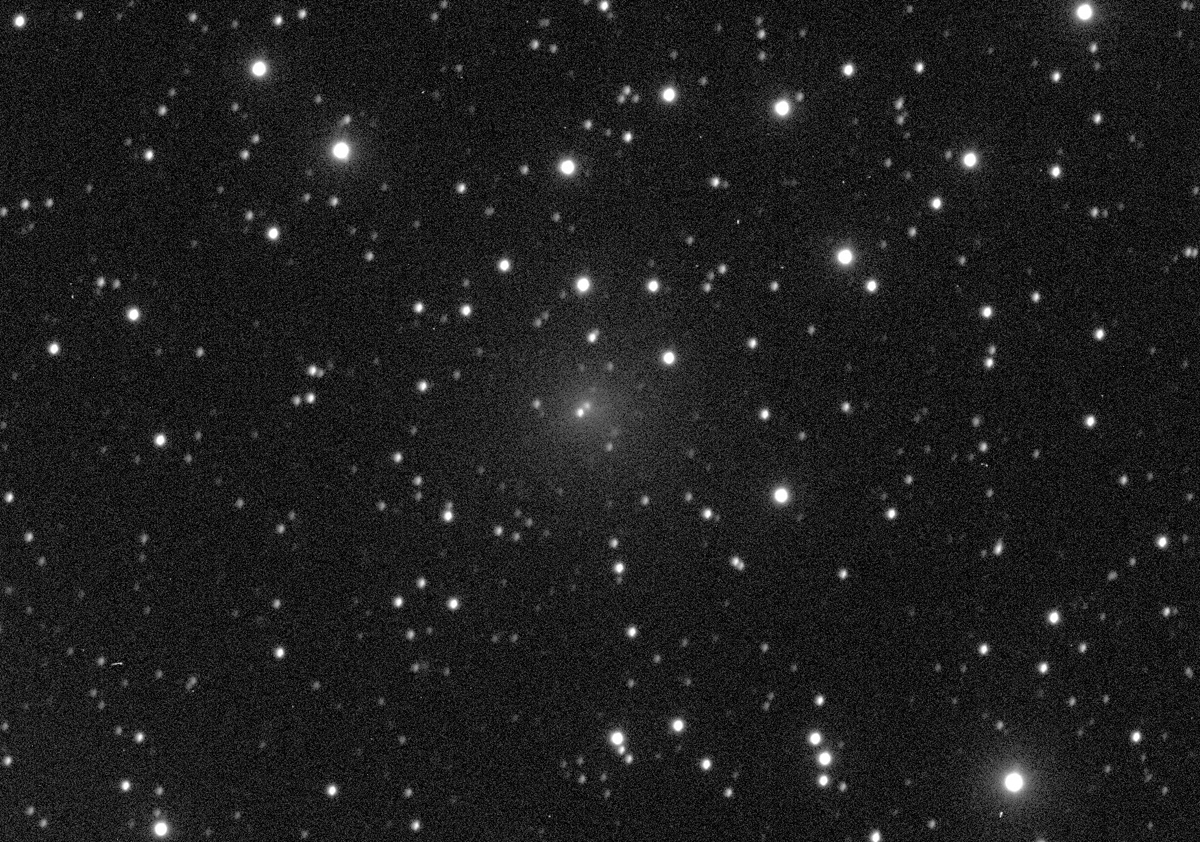

COMET OF THE WEEK
WEEK 31: JULY 26 -- AUGUST 1
COMET NEOWISE C/2020 F3
Perihelion: 2020 July 3.68, q = 0.295 AU
For the second time during the course of “Ice and Stone 2020” I have found it appropriate to swap out my originally intended “Comet of the Week” for a comet currently appearing in our skies. For the past three weeks Comet NEOWISE has been putting on a splendid show in the northern hemisphere’s nighttime sky, the best cometary display that those of us at northern temperate latitudes have seen in over two decades. I consider it a borderline "Great Comet."
In some of the previous “Special Topics” presentations I have discussed NASA’s Wide-field Infrared Survey Explorer (WISE) spacecraft, which was launched on December 14, 2009, and which then spent the next ten months surveying the entire sky at four different infrared wavelengths. During that time it made many important discoveries of astronomical objects both within and beyond the solar system; among these were 17 comets as well as the first-known “Earth Trojan” asteroid, 2010 TK7. (Trojan asteroids are the subject of a future “Special Topics” presentation.) After WISE’s solid hydrogen coolant ran out in October 2010 it remained a healthy spacecraft, with two of its infrared detectors (at the shorter wavelengths) still active, and after a period of hibernation WISE was reactivated in 2013 and, under the mission name NEOWISE (for “Near Earth Object Wide-field Infrared Survey Explorer”), was tasked with the primary mission of surveying the sky for potentially threatening objects in Earth’s vicinity. Since then it has discovered approximately 200 Earth-approaching asteroids as well as 15 additional comets.
From June 22 through 28 Comet NEOWISE traversed the southwestern quadrant of the field of view of the LASCO C3 coronagraph aboard the NASA/ESA SOlar and Heliospheric

The first ground-based observations were reported as early as July 1, at which time Comet NEOWISE was very deep in twilight. I saw it on the morning of July 3 – the day of perihelion passage – and despite being at an elongation of only 13.5 degrees it was readily visible in 10x50 binoculars as an object of 1st magnitude, already with a distinct tail. Over the course of the following week the comet continued climbing higher into the morning sky, and although it did start to fade slightly, its higher location above the horizon made it an easy naked-eye object. On the morning of July 11 I could easily see it as a 2nd magnitude object with a prominent dust tail several degrees long.

 Comet NEOWISE as imaged by different spacecraft. Left: A composite image, prepared by Michael Jaeger in Austria, of six images from the LASCO C3 coronagraph aboard SOHO taken on June 25 and 26, 2020. Courtesy NASA/ESA. Right: Image taken on July 5, 2020, by the Wide-field Imager for Solar PRobe (WISPR) instrument aboard NASA’s Parker Solar Probe. Courtesy NASA/Johns Hopkins APL/Naval Research Lab/Parker Solar Probe/Brendan Gallagher.
Comet NEOWISE as imaged by different spacecraft. Left: A composite image, prepared by Michael Jaeger in Austria, of six images from the LASCO C3 coronagraph aboard SOHO taken on June 25 and 26, 2020. Courtesy NASA/ESA. Right: Image taken on July 5, 2020, by the Wide-field Imager for Solar PRobe (WISPR) instrument aboard NASA’s Parker Solar Probe. Courtesy NASA/Johns Hopkins APL/Naval Research Lab/Parker Solar Probe/Brendan Gallagher.
After passing through conjunction with the sun (24 degrees north of it) in mid-July Comet NEOWISE moved over into the northern hemisphere’s evening sky, and continued to climb higher into a darker sky. While it continued to fade slowly, its better visibility allowed it to remain a prominent object for observation, and when it was closest to Earth (0.69 AU) on July 23 – the 25th anniversary of my discovery of Comet Hale-Bopp – it was readily visible to the unaided eye near 3rd magnitude and sporting both a prominent dust tail (which to my unaided eye appeared 12 degrees long the previous night) as well as a distinct ion tail. The dust tail has exhibited the so-called “synchronic bands” (discussed in a future “Special Topics” presentation), and meanwhile shortly after perihelion passage spectroscopic observations of the comet revealed an unusually large amount of sodium within its coma.

 Photographs I have taken of Comet NEOWISE. Left: Morning sky, July 11, 2020. Right: Evening sky, July 21, 2020. I had hoped to photograph the comet the following night -- the 25th anniversary of my discovery of Comet Hale-Bopp -- but was clouded out.
Photographs I have taken of Comet NEOWISE. Left: Morning sky, July 11, 2020. Right: Evening sky, July 21, 2020. I had hoped to photograph the comet the following night -- the 25th anniversary of my discovery of Comet Hale-Bopp -- but was clouded out.
At this time Comet NEOWISE – still visible to the unaided eye near 3rd magnitude – remains in the western sky during the evening hours as it travels southward, and is now starting to become accessible again to observers in the southern hemisphere. It continues to travel southward over the coming weeks and should continue fading before disappearing into evening twilight around mid-October.
“Comet of the Week” archive
Ice and Stone 2020 home page
Earthrise Institute home page